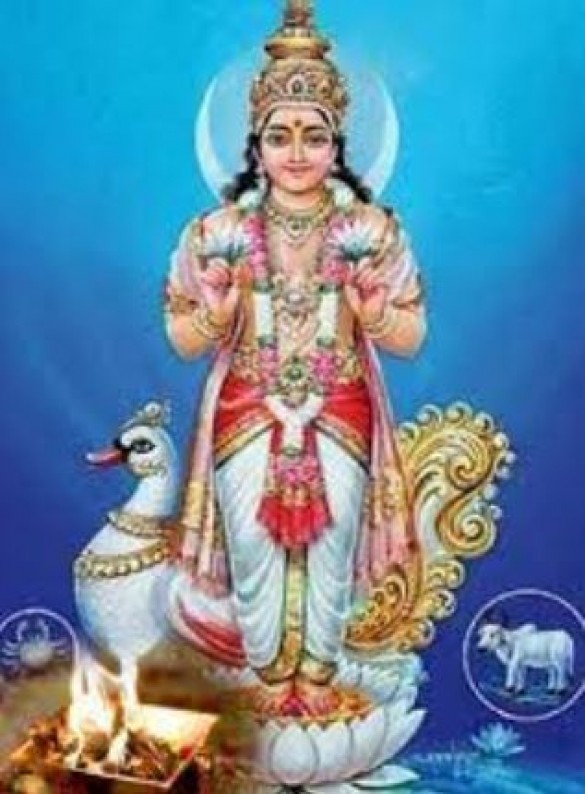
Chandra dev known as Soma the god of moon and is associated with the night, plants and vegetation. He is one of the Navagraha and Dikpala.
The Chandra is Sanskrit word which means bright, shining and glittering. In Hindu cosmology, Chandra Deva plays a vital role in shaping the lunar cycles and is revered for his divine powers, beauty, and benevolence. This essay will explore the various aspects of Chandra Deva, his role in Vedic mythology, his symbolic representations, and his influence on Hindu traditions.
In the Rigveda, the oldest of the Vedic scriptures dating back more than three millennia, Chandra Deva is extensively mentioned and praised. He is associated with the moon, night, fertility, and the elixir of immortality.
Also Read: Vayu deva: God Of Wind
In Hindu mythology, Chandra Deva's origin story varies across texts. According to some legends, he is the son of sage Atri and his wife Anasuya. He emerges from the cosmic ocean during the great churning (Samudra Manthan) of the milky ocean by the gods and demons. He is believed to have been instrumental in obtaining the divine elixir (amrita) that grants immortality to the gods.
The waxing and waning of the moon, known as the lunar phases, have long fascinated humans. In Vedic times, people observed the changing phases of the moon and associated them with Chandra Deva's activities. The waxing moon represented his growth and strength, while the waning moon symbolized his decline.
Chandra Deva's influence extended beyond mythology and rituals. In ancient India, the lunar calendar played a crucial role in agricultural practices, ensuring the right time for sowing and harvesting crops. The phases of the moon were also associated with human emotions and behavior. For instance, the full moon was believed to have a profound impact on human psychology, with increased rates of lunacy (lunatic, derived from Luna, Latin for the moon) being attributed to its influence.
Also Read: Surya Dev: Sun God
Apart from his benevolent aspects, Chandra Deva's connection with the moon also made him a suitable deity for celestial inspiration. Many poets and artists sought his blessings before creating their masterpieces, hoping to be guided by his gentle light and creativity. In Hindu iconography, Chandra Deva is often depicted on the headdress of Lord Shiva, emphasizing his significance in the Hindu pantheon.
In addition to his role in mythology and religious practices, Chandra Deva is associated with several festivals and observances in Hindu culture. The most prominent among them is the Chandra Grahan (lunar eclipse) and Surya Grahan (solar eclipse), which are considered significant celestial events with spiritual implications. Devotees often observe fasts and perform special prayers during these occurrences to seek protection from negative influences.
Chandra Deva's veneration is not limited to ancient times but endures in modern Hindu practices as well. Temples dedicated to him can still be found in various parts of India, where devotees offer prayers and seek his blessings for happiness, prosperity, and mental peace. The festival of Karva Chauth, celebrated predominantly by married women, involves fasting and praying to Chandra Dev for the longevity and well-being of their husbands.
Also Read: Agni Dev: God of Fire
Chandra Deva, the Vedic god of the Moon, occupies a significant place in Hindu mythology, religious practices, and cultural traditions. As the celestial embodiment of the Moon, he symbolizes calmness, beauty, and fertility. His origin stories, legends, and cosmic role have captured the imagination of generations, making him a beloved deity in the diverse tapestry of Hinduism. Even in modern times, his influence endures, connecting people to the mysteries of the lunar cycles and the cosmic forces that shape our lives.
Also Read: Matangeshwar Temple: Houses The Lingam.
Dohas: The Ancient Wisdom in Couplets